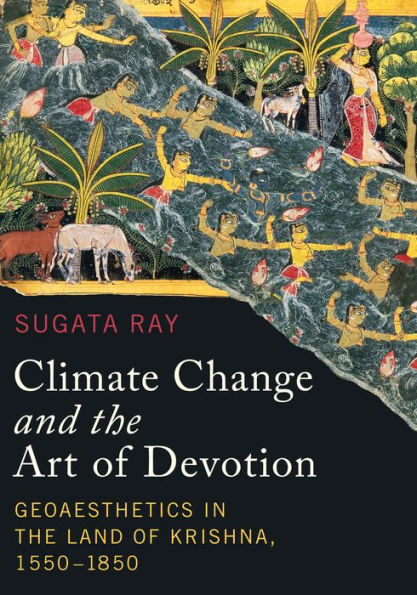Amitav Ghosh
"A wonderfully imaginative addition to the growing body of literature on the Little Ice Age. Sugata Ray traces the influence of climatic variations on South Asian art, architecture, and devotional practices with extraordinary interpretive skill."
Partha Mitter
"Sugata Ray’s Climate Change and the Art of Devotion draws an unexpected and strikingly original connection between the catastrophic consequences of the Little Ice Age (c.1550-1850) and the rise of a site-specific theology at the pilgrim centre of Braj in India. This scholarly, elegantly written art historical monograph that skilfully combines archival scholarship with theoretical sophistication, makes a powerful contribution to recent debates on the environmental crisis in the present anthropocene epoch."
Dipesh Chakrabarty
"The rocks, rivers, forests, plants, animals, and even the skies of the Mathura-Vrindavan region in north India come alive as historical agents acting alongside humans in Ray's pioneering and imaginative attempt to develop a geoaesthetic approach to the study of Hindu religious art and architecture over a period ranging from the sixteenth to the mid-nineteenth century. His impressive ability to connect events in the realm of aesthetics and religious devotion with the climatic impact of the Little Ice Age in South Asia, is bound to influence debates in art history in South Asia and beyond. A brilliant achievement."
From the Publisher
"A bold and ambitious project that takes on a sweeping range of issues across both the humanities and social sciences. Ray brings core Indian material into dialogue with current conversations about the relationship between the human and nonhuman, between materiality and immateriality, and climate change and visual culture. The book serves as a challenge to future scholars to expand the range of their own conversations."—Tamara Sears, author of Worldly Gurus and Spiritual Kings: Architecture and Asceticism in Medieval India
Tamara Sears
"A bold and ambitious project that takes on a sweeping range of issues across both the humanities and social sciences. Ray brings core Indian material into dialogue with current conversations about the relationship between the human and nonhuman, between materiality and immateriality, and climate change and visual culture. The book serves as a challenge to future scholars to expand the range of their own conversations."



